#Tasting history with max miller
Text
Potato Crisps / Chips on Tasting History
So we've just watched Max's latest...
youtube
...and I was grinning a bit because I posted about Dr Kitchiner's 1817 (non-US, definitely non-Saratoga) crisps / chips recipe a month ago.

That image was from an American edition of his book; I've found a pic from the original - NB that these slices are floured before frying.
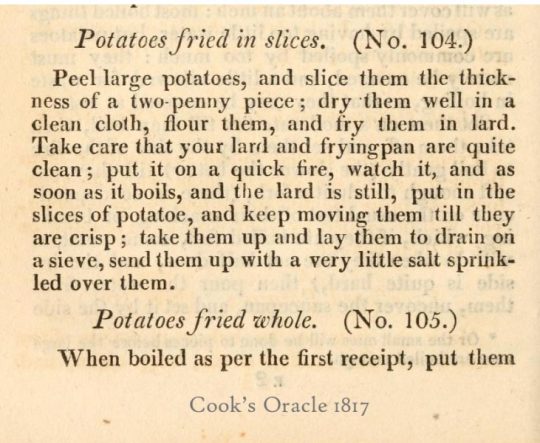
For reference, here's a two-penny piece from about 1797; the coin would still be current 20 years later:
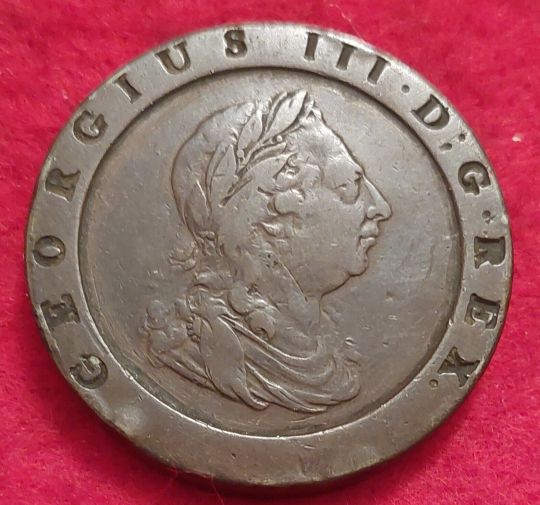

...and here's how thick the potatoes should be sliced. That's 4mm, which is 2mm less than "a quarter of an inch" (6.25mm).

The slices will get even thinner as their moisture evaporates during frying, and, given the nature of recipes, potatoes cooked this way are probably even older than 1817 and Kitchiner's is just the first appearance found so far in print.
*****
The first recipe for "Game Chips" (an accompaniment to grouse, pheasant etc.) appeared, per the Wikipedia link, in a 1903 book published by famous chef Auguste Escoffier (1846-1935):

"Chip potatoes - these are potatoes cut into thin slices; this is usually done with a special plane. (A mandoline.)
They are put in cold water for 10 minutes; then drained, dried in a cloth and fried until very crunchy. They are served hot or cold and generally accompany game roasted in the English style."
However, per Escoffier's Wikipedia page, much of his work was based on that of Anton Carême (1783-1833), whose dates are squarely coincident with Dr Kitchiner's Potato Slices.
Given the amount of cookery to-and-fro between England and France after the Napoleonic wars were over, it's impossible to say who first came up with the idea of potato crisps.
The French loved dainties - "un petit quelquechose", a little something - which the English pronounced and dismissed as "kickshaws", something over-fussy yet insubstantial. Yet those same English also loved roasting things with their appropriate accompaniments.
(I'm writing this just over a week after Christmas, and have been well reminded that the phrase "Roast (turkey / goose / beef) With All The Trimmings" is still in common 21st-century use.)
If those roasted things were game birds, only those above a certain level in society would be eating them, so it's not unreasonable to assume a rich-person game bird would attract fussy, time-consuming rich-person trimmings like, okay, Game Chips.
One thing's for sure, Potato Crisps - and Game Chips too, so hard luck, Escoffier - are almost certainly older than even Tasting History could prove.
*****
BTW, they also existed at a time when "English Food Was Bland" is more fake history.
Sauces put out on the table in fancy bottles had fancy labels ("bottle tickets") showing what was in them, and the contents were often far from bland.
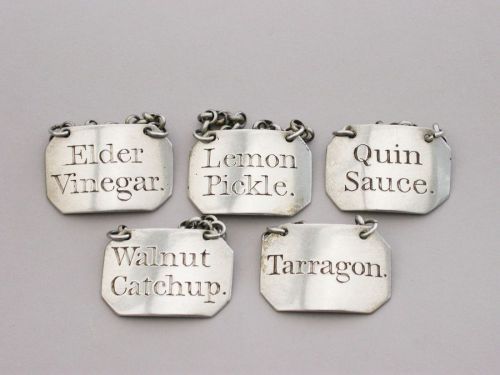
Quin sauce was anchovy-based, hot and pungent.

Harvey's was a spicy sauce similar to Worcestershire, ketchup was probably mushroom and also spicy; the other two need no elaboration.

AFAIK the two crescent-shaped ones in the next pics are deliberate imitations of an officer's rank-gorget.



Finally a generic Not-Bland label that would go on any number of modern bottles (antique silver, yours for £250)...

*****
And after all of the above, I could do Very Bad Things to a packet of Tayto Cheese 'n' Onion. A packet?
Why stop at a packet when A Pack takes less time to say?
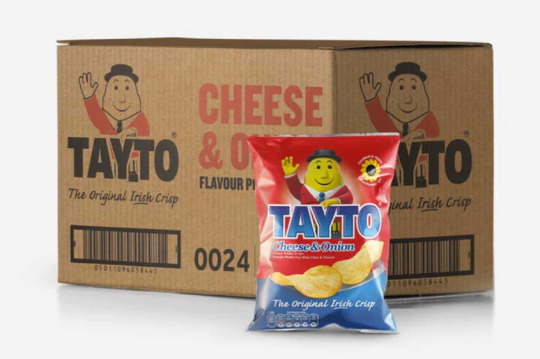
After all, It Is Written that:
"Reading One Book Is Like Eating One Potato Crisp Chip."
And also that Nothing Exceeds Like Excess...
#food and drink#potato crisps#game chips#Tasting History with Max Miller#Diane Duane#Reading one book is like...#...like eating one potato chip#wise words maxims and apothegms#Youtube
600 notes
·
View notes
Text



Marks and Rec: Misc #2554
"We're going to sh*t on your shingles!" (Dialogue from The Great.)
#max miller#tasting history#dylan hollis#b dylan hollis#incorrect quotes#tasting history with max miller#marks and rec misc#source: the great#vid: chipped beef - b dylan hollis#vid: what did wwii soldiers eat? - tasting history#the food is nicknamed 'shit on a shingle' you see#food image#swearing
299 notes
·
View notes
Text
Hm…




Arceus “Sitting Cuties” Pokémon plushie
#tasting history#tasting history with max miller#mesopotamia#pokemon#pokémon#arceus#sitting cuties#pokemon plush#i’m dead sure someone has noticed this before me but still#ford speaks
22 notes
·
View notes
Text
If not for covid, the cost of food these days, and my medical dietary restrictions I would host a pot luck were we all make old timey recipes
#why yes i watch too much#tasting history with max miller#b dylan hollis#townsends#great depression cooking#and such#food#cooking#old timey recipes
121 notes
·
View notes
Note
Tasting history with Max Miller!
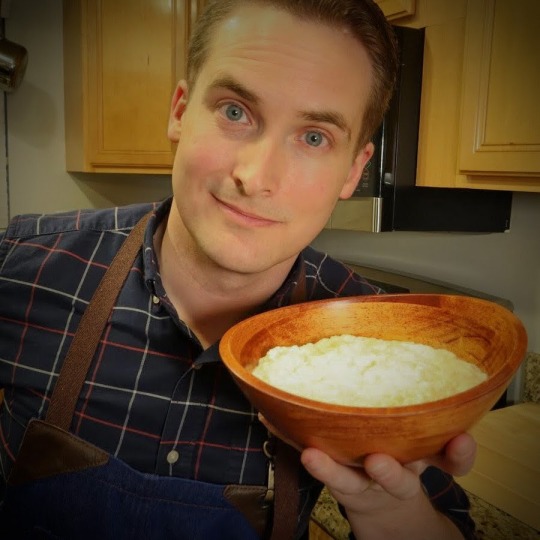
15 notes
·
View notes
Text
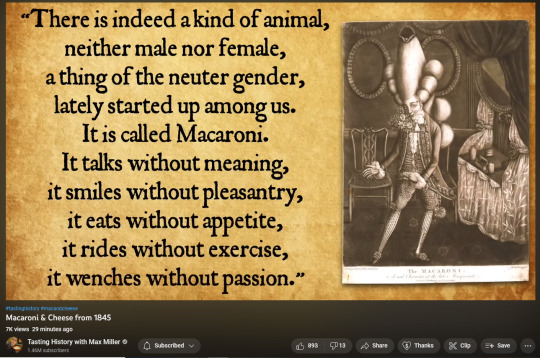
Reblog if you are indeed a kind of animal, neither male nor female, a thing of the neuter gender (macaroni)
#tasting history#tasting history with max miller#macaroni#do i really tag this as macaroni???#oh well
143 notes
·
View notes
Text
youtube
I have never used this particular recipe, but it looks simpler than the one I am used to. This history part of this video is my favorite though!
#napoleon#napoleon bonaparte#chicken marengo#poulet a la Marengo#youtube#history#tasting history with max miller
15 notes
·
View notes
Text


Look, guys. I found professor Turo irl.
#professor turo#max miller#tasting history#tasting history with max miller#pokemon sv#pokemon violet#pokemon#sillyposting#ポケットモンスター#ポケモン#ポケモンsv
8 notes
·
View notes
Text
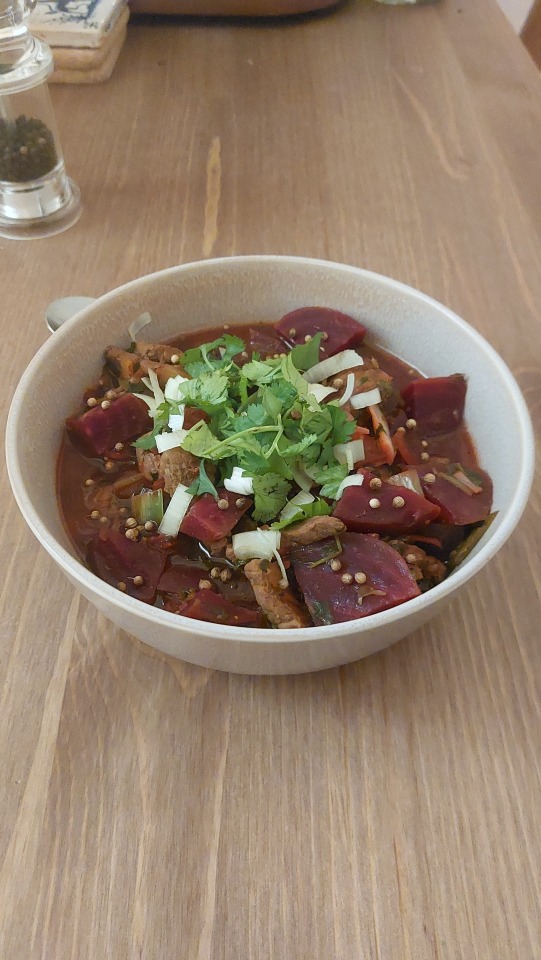
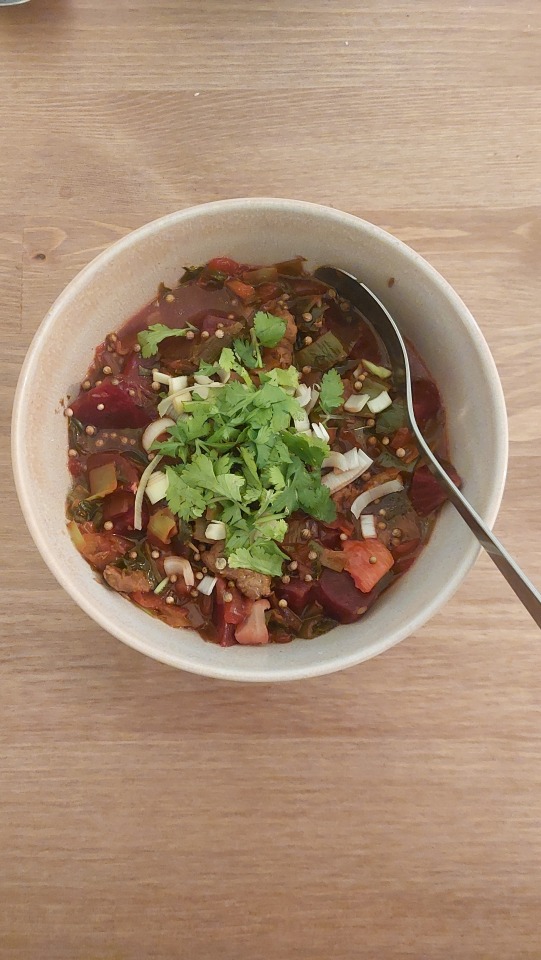
TUH'U (c. 1740 BCE)
The next Tasting History dish I had to try was Babylonian Tuh'u, a beet and lamb stew. The recipe for this dish is from the Yale Tablets, ancient Mesopotamian cuneiform tablets from 1740 BCE held at Yale University. According to these tablets, Babylonians loved eating stew - this stew recipe was just one of many stamped into these tablets. Max really liked Tuh'u when he made it, and even said it wouldn't be out of place on a modern menu. It's very impressive to see the Babylonians making meals with complex flavour combinations that can even please the palatte of people thousands of years in the future. See Max’s video on how to make it here or see the ingredients and process at the end of this post, sourced from the Youtube description of the video.
My experience making it:
I made a simple change or two from the modern recipe below. I used beef instead of lamb, mainly because the butcher I usually source lamb from was closed this week (and it's otherwise hard to find where I live). Further, I didn't end up using any of the water that Max lists in the ingredients. In terms of beer, I used Erdinger Weißbier, since it is very easy to find where I live. Unfortunately, sour beer is much harder to find, so I didn't consider using it.
In terms of preparation, this recipe requires lots of chopping (meat, onion, leek, shallot, arugula, cilantro...) and a little bit of grinding in the mortar & pestle (cumin seeds and garlic). I was very excited to use my new mortar & pestle, I love it already! The cumin seeds smelled divine while I was crushing them. Due to the long simmer time, the recipe took me about 1 hour and 30 minutes to make. The broth doesn't really thicken like a normal stew, so I decided to leave a little liquid and not boil all of it away, as the broth usually retains lots of the flavour. Due to the beautiful colour of the beets and the pops of fresh green from the cilantro, this dish was visually pretty to look at once it was served. The result was, like Max said, a dish I could definitely see being served in a restaurant today. The Babylonians had good taste!
My experience tasting it:
I tried this one on my own since my husband got home from work pretty late. The first bites were full of flavour - particularly the cilantro's. The texture and pop of flavour from the dried coriander seeds were also present, as well as the cumin, onion, and beet flavour. The beef didn't add much flavour, but definitely soaked up the flavour of the dish like a sponge. I enjoyed every bite of this one, and even saved some for leftovers to have at work. I had a feeling I would like this dish, because I like all the ingredients, and especially beets. I wasn't so sure if my husband would like it, but when he got home, he enthusiastically finished his bowl at record speed, exclaiming at how good it was in between spoonfuls. We both agreed it is the best historical dish I've made yet, and the best dish I've made in a while otherwise. I would actually consider sharing this recipe with friends, especially since the ingredients are fairly easy to find, and the process is fairly simple. Not to mention, the outcome was delicious! If you end up making it, if you liked it, or if you changed anything from the original recipe, do let me know!
Links to harder-to-find ingredients:
Cumin Seed
Coriander Seed
Tuh'u original recipe (c. 1740 BCE)
Sourced from the Yale Babylonian Tablets
Tuh’u sirum saqum izzaz me tukan lipia tanaddi tusammat tabatum sikara susikillum egegerum kisibirrum smidu kamunum alutum tukammas-ma karsum hazannum teterri kisibirrum ina muhhi sipki tusappah suhutinnu kisibirrum isarutu tanaddi.
Tuh’u. Lamb leg meat is used. Prepare water. Add fat. Sear. Add in salt, beer, onion, arugula, cilantro, samidu, cumin, and beets. Put the ingredients in the cooking vessel and add crushed leek and garlic. Sprinkle the cooked mixture with coriander on top. Add suhutinnu and fresh cilantro.
Modern Recipe
Based on the Yale Babylonian Tablets and Max Miller’s version in his Tasting History video.
Ingredients:
1 lb (450g) leg of lamb (or other meat), chopped in bite size pieces
3-4 tbsp oil or rendered fat
1 ½ tsp salt
2 cups (475ml) water (only to add if needed)
12 oz (350ml) beer (sour beer and German Weissbier preferred)
1 large onion, chopped
2 cups arugula, chopped
3/4 cup fresh cilantro, chopped
2 tsp cumin seeds, crushed in a mortar & pestle
2 large beets (approx. 4 cups), diced
1 large leek, minced
3 cloves garlic
1 tbsp dry coriander seeds
additional chopped cilantro for garnish
Samidu* (1 Persian shallot)
Suhutinnu* (Egyptian leek for garnish)
*These ingredients have no definite translation; the shallot and leek are the best guesses of scholars at Yale and Harvard Universities)
Method:
Add the oil/fat to a large pot and set over high heat.
Sear the lamb for several minutes in the oil until lightly browned.
Add the onions and let cook for 5 minutes.
Add the beets and let cook for 5 minutes.
Add the salt, beer, arugula, cilantro, samidu (shallot), and cumin and bring to a boil.
Mash the garlic into a paste and mix with the leek, then add to the pot.
Lower heat to medium and let simmer for approximately 1 hour, or until the beets and meat are cooked to your liking. Add water if you prefer.
Once cooked, dish it into a bowl and sprinkle with coriander seeds. Garnish with fresh cilantro and suhutinnu (leek).
#max miller#tasting history#cooking#tasting history with max miller#Tuh'u#Babylon#Beets#Beef#Mesopotamia#ancient history#ancient cooking#ancient meals#stews#keepers#18th century BC#beer#Mesopotamian meals#Ancient Babylon
5 notes
·
View notes
Text

Three adorable food boys sitting together in the same space having fun. If I find out any of them has done something bad I will cry
#tasting history with max miller#mythical kitchen#sorted food#its the food boys having a lovely time together in the same room
7 notes
·
View notes
Text
youtube
5 notes
·
View notes
Video
youtube
The Fake (and real) History of Potato Chips
Did George Speck Crum invent Potato Chips?
It depends on how thin you think it should be to qualify as a chip. He popularized a much thinner chip than had traditionally been made. This became known as the Saratoga Chip. He was apparently quite a skilled and renowned chef.
But, of course, he certainly did not invent frying potatoes in oil, even potatoes cut in thin slices. He just popularized a thinner slice.
Runtime: 17:55
4 notes
·
View notes
Text
youtube
Old Fashioned Halloween Candy & the First Halloween Party
Remember to provide enrichment for the local children, lest they turn to mischief.
#tasting history with max miller#halloween#food#no really according to max's research that's basically why we have Halloween parties#just give them something fun to do#that isn't property destruction#Youtube
5 notes
·
View notes
Text
Gay YouTubers stop coming out with books I haz no monies
#i forgot about hi honey I'm homo#matt baume#tasting history with max miller#b dylan hollis#reading list
23 notes
·
View notes
Text
My ADD Medication Journey - Mar 19, 2024
Slept pretty well--all things considered. Didn't use a sleep aid, nor did I put on any music. I'm encouraged by this.
Woke up and took my medication at the usual time.
All the usual expected effects--though the tremors were a bit different this time.
They lingered kind of all day but to a lesser extent. Just barely enough to be annoying, but not enough to be a proper hindrance. I'm thinking it was a matter of blood sugar because I was pretty hungry before lunch. After lunch, the tremors seemed to abate a little.
Aside from the tremors, if this is the direction things are going with this dosage, then I think this might work out fairly well.
#ADD#ADHD#Attention Deficit Disorder#Attention Deficit Hyperactive Disorder#Medication#Journal#Smokey's ADD Meds Journey#I had spaghetti for lunch#Chef Boiardi was on to something#Yeah he was a real person and he sold spaghetti dinner in a box#Learned about it in a youtube video#Tasting history with max miller#Parmesan emulsion on angel hair pasta
2 notes
·
View notes
Video
youtube
JFK's Last Meal - November 22, 1963
Interesting video about the morning of November 22, 1963. I enjoy the videos on Tasting History with Max Miller on YouTube.
#youtube#history#us history#american history#us presidents#american president#john f kennedy#first lady#us first lady#jacqueline kennedy#1960s#1963#max miller#tasting history#tasting history with max miller#breakfast#coffee#toasts#eggs#bacon
3 notes
·
View notes